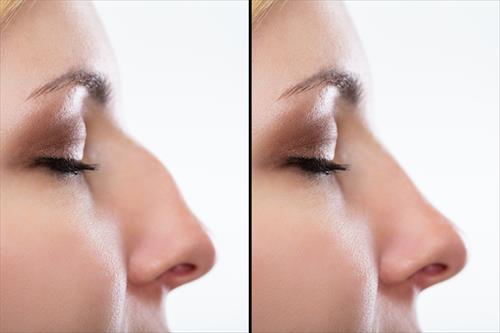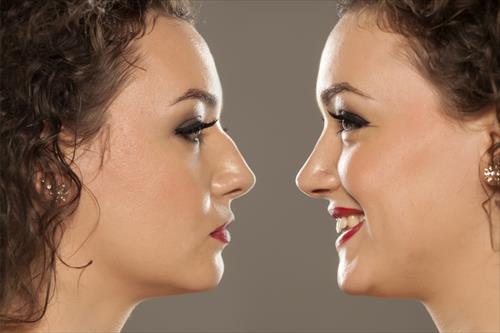



Rhinoplasty-1 Rhinoplasty-2 Rhinoplasty-3 Rhinoplasty-4
Τhe size and shape of the nose significantly affects the appearance of the face. Rhinoplasty as an operation aims to improve the appearance of individuals and at the same time to correct the functional problems of breathing.
Candidates for rhinoplasty
The aesthetic problem of the nose is more obvious when we see it in profile. However, complex problems with the architecture of the nose, which are also associated with difficulty breathing, are evident in all corners of the face. Improving the shape of the nose starts from the tip with the smoothing and improving the shape of the nostrils and ends in the back with the straightening and smoothing of the hump of the nose. Simultaneously with the aesthetic upgrade of the nose, the improvement of its functionality is carried out.
Surgical technique
Depending on the needs of each case, the open or closed method will be performed. In the closed method, the surgical incisions are made on the inner surface of the nostrils, so that there are no obvious marks after the operation. Respectively in the open operation an incision is made at the base of the stylus, the dermal islet that separates the two nostrils and continues inside the nostrils. The open method allows the best and most detailed restoration of the shape of the nostrils, as it has the advantage of direct supervision of the immediate result. The small scar at the base of the nose heals in a good way and it is very difficult to notice it. After the operation, bands and splints are placed on the nose for about a week.
After rhinoplasty
Patients usually return home the day after surgery. The reason for their stay overnight in the clinic has to do with their relief from postoperative pain, to control possible bleeding. In case intranasal splints have been placed, they are removed either on the day of discharge from the clinic or alternatively after three days in the office. After the operation, the first visit to the doctor's office takes place after about 7-10 days, during which the external splint is removed. The nose can then be closed with external patches for a further period of about a week.
Controlled nasal bone fracture (osteotomy) creates a possible communication between the inside of the nose, the skin of the nose and the lower eyelids. This can result in air being trapped in these areas when the air pressure in the nose area rises. To predict this phenomenon, it is recommended to blow your nose for three weeks after the operation, as well as to avoid air travel.










 Login
Login Forgotten password
Forgotten password